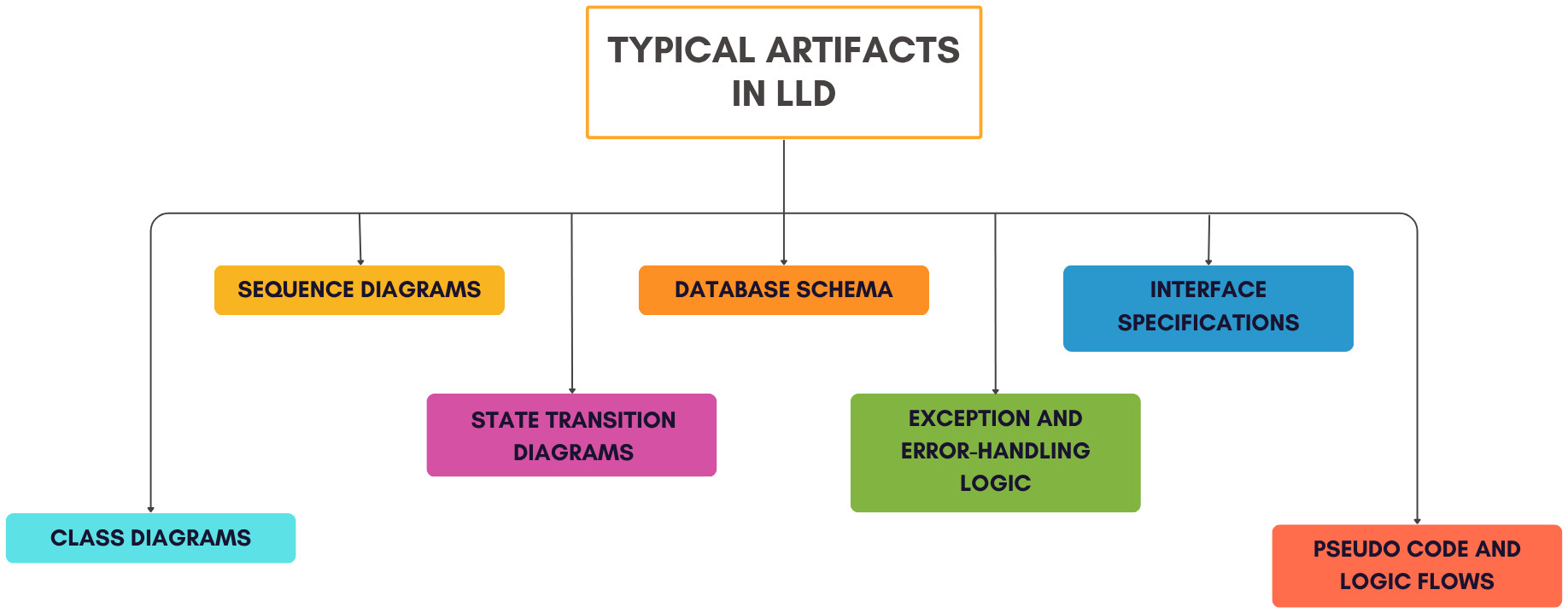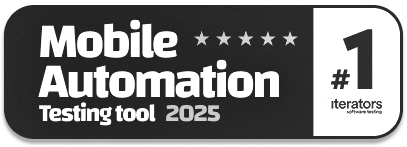High-Level Design (HLD) vs. Low-Level Design (LLD)
|
|
If Code Is Law, Then Design Is Policy.
Design is the blueprint of effective software. It is important to plan well in advance, at a time before writing any code, if the end result is to be precisely what you wanted. Also, the code should adhere to standards and be maintainable and extendable. There are two important steps in this phase: High Level Design (HLD), Low Level Design (LLD).
Although both are essential parts of the software development workflow, they are not made for the same purpose, the same kind of audience, nor the same level of abstraction. Understanding these two core design principles is not just an academic exercise. It is crucial for project scalability, bringing the team on the same path, and reaching strategic business goals.
| Key Takeaways: |
|---|
|
What is HLD?
High-level design (HLD) is like a blueprint in civil engineering. As an architect designs a building with structured blueprints and arranges the building’s shell and surroundings, HLD is the high-level structure of the total software system. It explains the anatomy of the system: what its structure hints at, what pieces it is made of, and how they relate to each other and to the outside.
HLD’s Objective and Scope
One of the main purposes of HLD is to provide stakeholders such as developers, architects, testers, and sometimes even customers with a big picture of what the system is and how it will interact at the macro level. It allows for the establishment of technical feasibility, resource allocation and development sequence.
The scope of HLD includes:
- System modules and how they interact
- The underlying technology and platforms (e.g., programming languages, databases, message brokers)
- External interfaces (APIs, third-party services)
- Communication protocols and data exchange formats
- Performance, security, and scalability considerations
HLD Meaning
HLD differs from code or even functional logic in that it is still abstract. It does not care whether you use the name “solve” or “my method ” or how you develop your algorithm. Instead, it stresses the cooperation of the system parts to reach most of the functional and non-functional requirements.
Typical Artifacts in HLD
Common artifacts in HLD are the base documents and design tools that define the architecture of systems and planning. These artifacts provide stakeholders with a high-level overview of the system’s architecture, data flow, and technology stack. Several artifacts and visual aids are used to communicate HLD:
- System Architecture Diagrams: These are illustrations showing how a system’s major components interrelate.
- Module Descriptions: Summaries of the functions and range of each system’s major components.
- Technology Stack: A list of programming languages, frameworks, databases, and technologies used. Read: How to Choose the Right Tech Stack for Engineering?
- Data Flow Diagrams (DFDs): A high-level representation of how data moves through a system.
- Interface Contracts: A high-level definition for how to pass data between internal modules and external systems.
- Security and Compliance Overview: Critical decisions for encryption, access management, and compliance.
What is LLD?
If HLD is the blueprint of your building, then Low-Level Design (LLD) is the engineering specification for each and every floor, door, pipe, and bit of wire in your building. It’s important to finish with LLD’s obsessively detailed accounts, poems of absolute description touching the internal logic of households or individuals, and precisely describing how to make one of each.
If HLD is the what, LLD is the how.
It decomposes each HL module into classes, functions, data structures, and algorithms that a developer can use to build them. By providing a comprehensive view of control flows, data management, and interaction logic, LLD guarantees that each member acts in a predictable manner and complies with the overall system design.
LLD’s Objective and Scope
The main goal of LLD is to map general modules of a system to concrete structures that can be implemented. They are guidelines for developers to turn the design into code that runs. LLD helps in:
- Clarifying the internal logic of modules
- Defining classes, methods, interfaces, and data types
- Establishing naming conventions and input/output specifications
- Documenting algorithms and control flows
- Specifying error-handling logic and edge case management
- Mapping out database table structures and relationships
LLD is inherently more technical and requires the involvement of experienced developers or tech leads who are familiar with the practical nuances of the codebase and runtime environment.
LLD Meaning
While HLD describes high-level, LLD examines actual control flows, business rules, and software behaviors. Its documentation also strives for completeness, so there is no confusion when you are actually writing code. Everything has to be tracked to be sure of consistency in development.
Typical Artifacts in LLD

The generic artifacts in LLD offer a detailed technical footprint needed for correct and synchronized development. This is what this artefact does: it transforms logical abstract components of the system into implementable logic. Developers will be able to see what each module would look like. They are the immediate basis for further implementation, testing, and maintenance. Artifacts created during LLD include:
- Class Diagrams: Illustrations of classes, their attributes, methods, and interrelationships.
- Sequence Diagrams: Descriptions of object interactions over time for a specific scenario or use case.
- State Transition Diagrams: Used to capture the behavior of a module as it moves between states in response to events.
- Pseudo Code and Logic Flows: Step-by-step description of algorithms in a readable format.
- Database Schema: Tables, fields, primary and foreign keys, indexing strategies, and relationships. Read: Database Testing Best Practices.
- Interface Specifications: Detailed input/output structure, validation rules, and pre/post-conditions.
- Exception and Error-Handling Logic: Definitions of recovery mechanisms and fallback strategies. Understand more: Effective Error Handling Strategies in Automated Tests.
How HLD and LLD Work Together
The move from High-Level Design to LLD is when the overall concept is translated into a directive. In fact, it is a delicate stage that connects design with the technical aspects. This operation is not a one-way street, but pockets of positive results have the opportunity to have an impact back upstream to iterate and enhance the overall system design.
Transitioning from HLD to LLD
Following approval of the HLD by stakeholders, development leads piece apart each HLD high level module into its constituent parts. This change should be logical, consistent and progressive. HLD makes a decision about the modules and how they interact and each of those modules is a potential LLD specification.
Example: An HLD could specify a module as “User Authentication.” The LLD would, in turn, describe how this module identifies a user by performing a database query, validating a hash, or generating a token, and calling into other services.
Bidirectional Influence
The direction of flow is typically from HLD to LLD. However, in Agile environments or where requirements are evolving, discoveries during the LLD phase may also result in modifications to HLD. This feedback is crucial for systems that require adaptation.
This iterative conversation makes the architectural decisions applicable to new technical constraints or optimizations that arise in development. By letting LLD shape HLD, teams can keep a check on the divergence of real world implementations and high design conceptions.
Comparing HLD and LLD
The distinguishing features of HLD and LLD are defined to avoid confusion. An explicit comparison not only helps to facilitate the communication among architects, developers, and testers but also makes it clear who is responsible for what at each stage of the system design. Comparing the two design levels against one another allows teams to make the best use of their resources, minimize re-work, and ensures continuity from the planning stages through to the construction process.
Below is a detailed comparison across various dimensions:
| Aspect | High-Level Design (HLD) | Low-Level Design (LLD) |
| Purpose | Define system structure and module relationships | Define detailed module logic for development |
| Abstraction | High | Low |
| Focus | “What” the system does | “How” does the system do it |
| Audience | Architects, leads, and clients | Developers, testers |
| Documentation | Diagrams, module specs, tech stack | Class diagrams, logic flows, pseudo-code |
| Technology Involvement | Describes tools and platforms used | Applies those tools in design implementation |
| Output Usability | Drives architectural decisions and project planning | Drives code development and unit test creation |
| Detail Level | Conceptual, large-grained | Technical, fine-grained |
| Change Tolerance | More stable once defined | More flexible and iterative |
This comparison highlights how both design levels cater to different stakeholders and stages in the SDLC.
HLD and LLD in Sustainable Development
Design decisions carry far-reaching implications. They’re not limited to a completed build and will assist with further development, scaling, and technology upgrades. By building a solid, documented foundation, HLD and LLD determine whether the software ages gracefully or becomes a maintenance nightmare. Robust HLD and LLD documentation has several implications, such as:
- Reducing Risk: A robust HLD discovers the weak architectural points, points of failure, and performance bottlenecks before they actually occur during the implementation phase. Likewise, LLD protects you from logical errors, stupid behaviour, or abuse of data in your codebase.
- Enhancing Maintainability: When systems need to evolve due to business or technical changes, maintainability is key. A well-documented LLD allows developers unfamiliar with the original codebase to step in and understand the logic quickly. HLD helps system integrators and DevOps teams understand component boundaries and interdependencies.
- Enabling Parallel Development: With a clear border between modules drawn at HLD and detailed logic drawn at LLD, each team can view different modules at the same time, but doesn’t drag integration issues into dealing with another team. This modular layout speeds up the development process and cuts down the overhead.
- Supporting Scalability: HLD explains how the system scales both vertically ( adding power) and horizontally (adding nodes). Another key is LLD, which somehow guarantees that the code structures are doing so through directive caching, effective design patterns, and non-blocking operations. Read: Scalability Testing: Automating for Performance and Growth.
- Streamlining Testing and Quality Assurance: Don’t lose a good HLD which can influence SIT approach. Full LLD enables unit and functional test scheduling. The design to test case view mapping offers traceability and an early detection of bugs.
Documentation and Review Strategy
Having good documentation for both HLD and LLD is crucial -not just for building the system, but for maintaining it post-implementation as well. Well-documented code means future developers, testers, and architects no longer have to depend on the original authors to understand, maintain, and extend the software. It is also used as a baseline for auditing, training, and debugging the system over the life of the software.
Characteristics of Good HLD Documentation
Good HLD documentation is the cornerstone reference for driving development, maintaining alignment, and communicating across teams. All of these features are vital for the design to be implementable alone and changeable alone.
- Clarity: Easily understood by both technical and non-technical stakeholders.
- Consistency: Uses standard terms, naming conventions, and diagram styles.
- Completeness: Covers all modules, interfaces, data flows, and constraints.
- Justification: Explains why specific architectural choices were made.
Characteristics of Good LLD Documentation
Effort should be taken in developing LLDs that are of high quality so that there is a concrete blueprint for developers to follow. It transforms your architectural design into detailed code that supports maintainability and extensibility.
- Precision: Includes exact data types, logic flow, and method contracts.
- Traceability: Each LLD item maps to a specific HLD component.
- Modularity: Breaks complex logic into reusable blocks.
- Review-Readiness: Structured for peer review and iterative refinement.
Both documents should be stored in version-controlled repositories, accessible to all relevant teams, and updated as the system evolves.
Security Considerations in Design
By designing with security already in mind, potential threats that attack data integrity, confidentiality, or system availability are less likely to occur. Both HLD and LLD need to effectively prevent such a threat by constructing a secure architecture and implementing strong practices.
Embedded security consistently morphs the nature of IT security from something bolted on and addressed after the fact to a reinforcement process that is automatically woven during the design process and remains stable throughout the life of the device.
| Security at the HLD Level | Security at the LLD Level |
|
|
A system’s security posture can be strengthened only if both design layers treat it as a first-class concern.
How HLD and LLD Impact Testing
Testing strategies need to be rooted in design. HLD and LLD both contribute valuable information to the test phase. HLD provides an overview of system architecture and what components should be tested at a high level, such as modules, interfaces, and data flow. LLD captures details at a fine-grained level that supports the generation of accurate test cases, having functionality coverage down to the component level.
| Testing from HLD | Testing from LLD |
|
|
Without these design documents, testers may lack the necessary context to validate functionality accurately and comprehensively.
Conclusion
High-level design and low-level design are not just two separate stages of development; they are strategic decisions that dictate the overall direction of a project. HLD defines the system framework and its direction, while LLD creates the platform-based solution, acting as the logical, structural, and implementable method for reaching that direction.
When implemented well, HLD and LLD establish a structure of simplicity and uniformity that runs throughout the SDLC. They help ensure that everyone, from developers and testers to architects and business stakeholders, is on the same page regarding the system: what it is, how it behaves, and why certain decisions were made.
Ignoring these frameworks is like constructing without a blueprint. Understanding them is a requirement for building software that is strong, scalable, secure, and ultimately successful.
| Achieve More Than 90% Test Automation | |
| Step by Step Walkthroughs and Help | |
| 14 Day Free Trial, Cancel Anytime |












